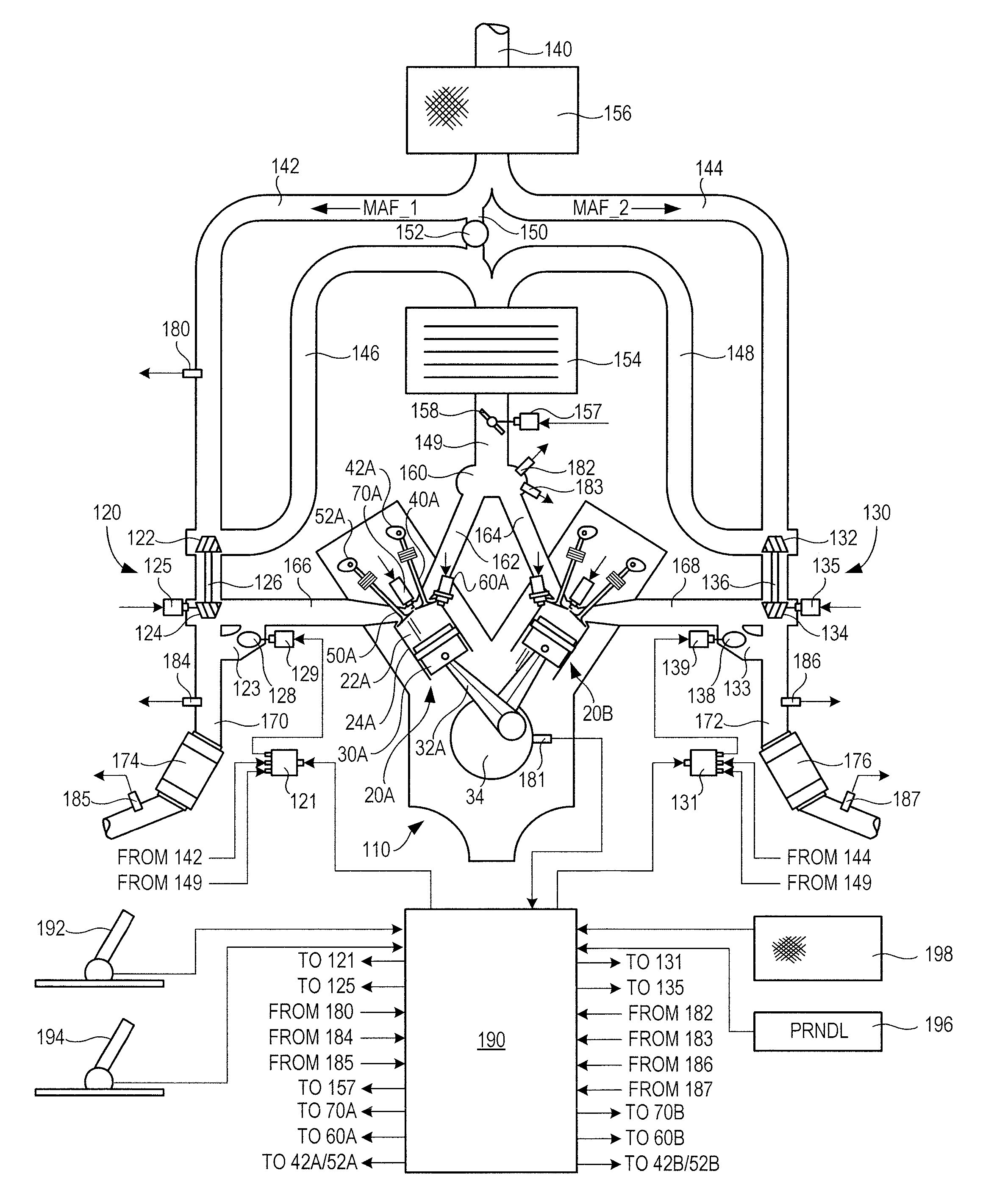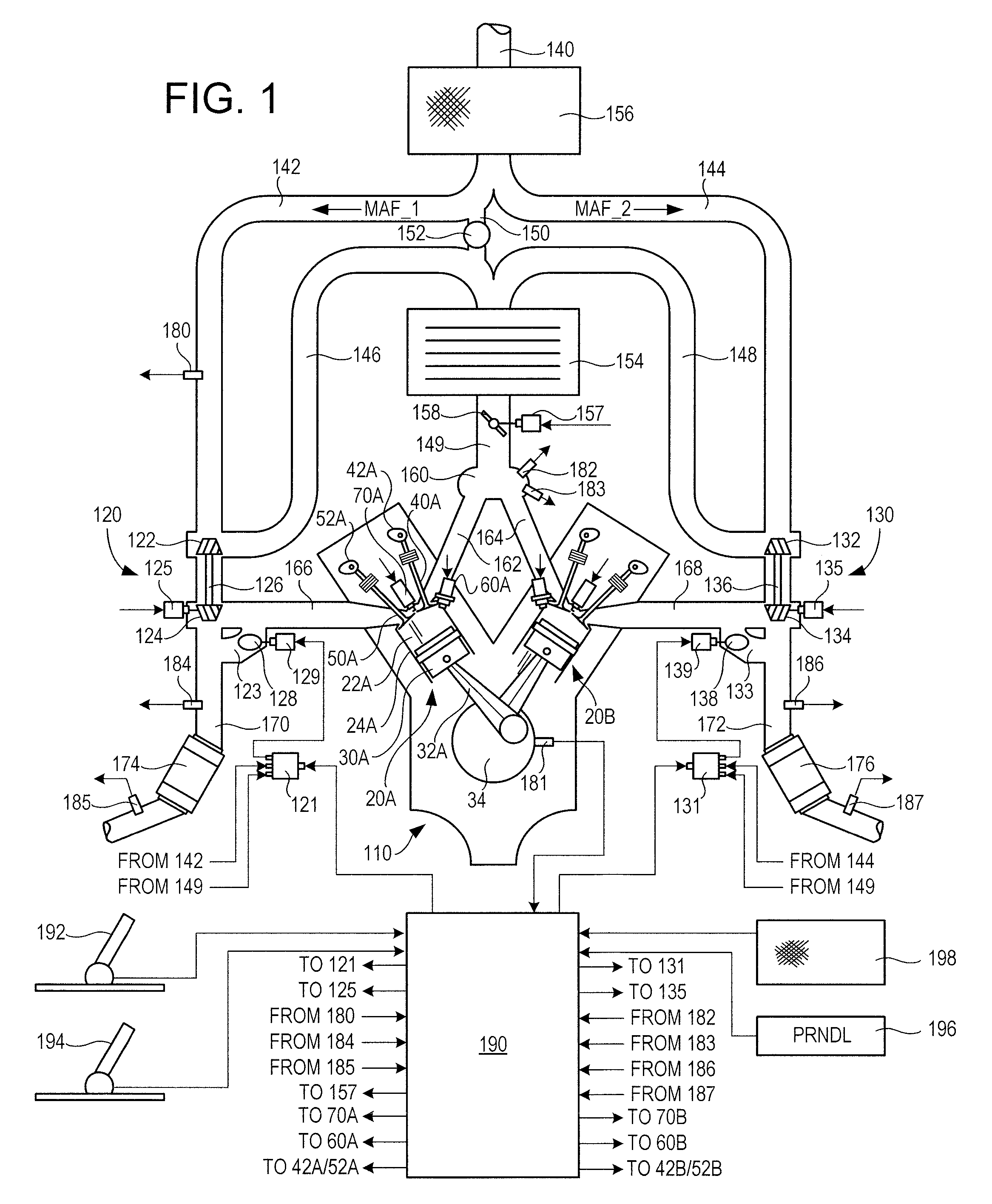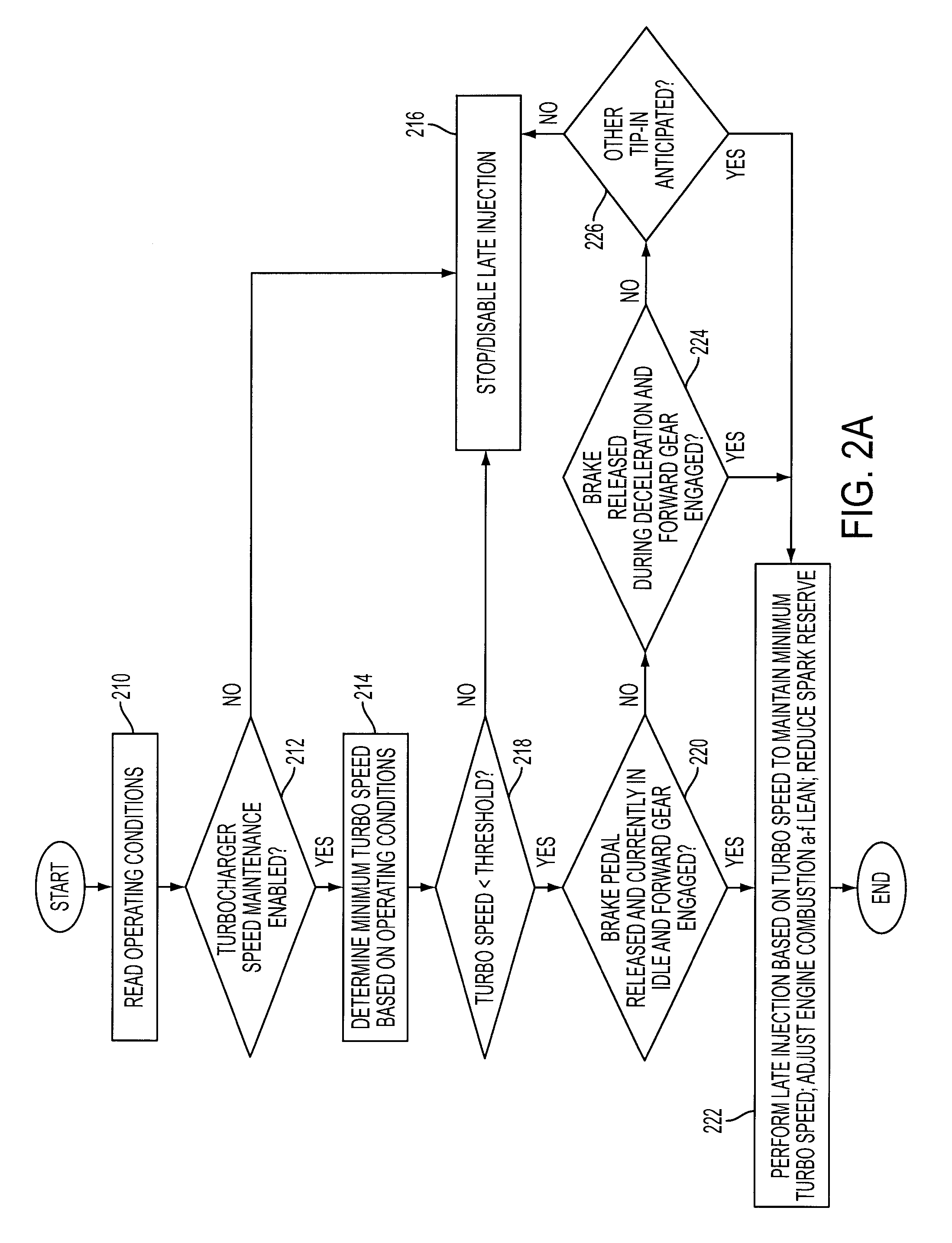Engine idle speed and turbocharger speed control
a turbocharger and idle speed technology, applied in the direction of electric control, brake systems, instruments, etc., can solve the problems of significant overall fuel economy loss, degrade fuel efficiency, increase the speed of the turbine, etc., to maintain the speed of the turbocharger, increase the combustion torque, and increase the heat
- Summary
- Abstract
- Description
- Claims
- Application Information
AI Technical Summary
Benefits of technology
Problems solved by technology
Method used
Image
Examples
Embodiment Construction
[0010]FIG. 1 shows a schematic depiction of an example engine system 100 including a multi-cylinder internal combustion engine 110 and twin turbochargers 120 and 130. As one non-limiting example, engine system 100 can be included as part of a propulsion system for a passenger vehicle. Also, while this example shows a twin turbocharger example, a single turbocharger, or more than two turbines and / or compressors may be used.
[0011]Engine system 100 can receive intake air via intake passage 140. Intake passage 140 can include an air filter 156. At least a portion of the intake air can be directed to a compression device or compressor 122 of turbocharger 120 via a first branch of the intake passage 140 as indicated at 142 and at least a portion of the intake air can be directed to a compressor 132 of turbocharger 130 via a second branch of the intake passage 140 as indicated at 144.
[0012]A first portion of the total intake air can be compressed via compressor 122 where it may be supplied...
PUM
 Login to View More
Login to View More Abstract
Description
Claims
Application Information
 Login to View More
Login to View More - R&D
- Intellectual Property
- Life Sciences
- Materials
- Tech Scout
- Unparalleled Data Quality
- Higher Quality Content
- 60% Fewer Hallucinations
Browse by: Latest US Patents, China's latest patents, Technical Efficacy Thesaurus, Application Domain, Technology Topic, Popular Technical Reports.
© 2025 PatSnap. All rights reserved.Legal|Privacy policy|Modern Slavery Act Transparency Statement|Sitemap|About US| Contact US: help@patsnap.com



